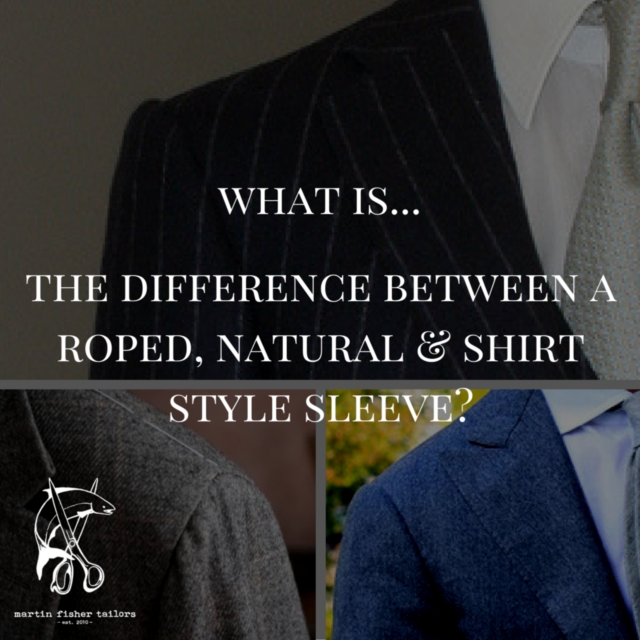What is Wednesday.
This weekly Wednesday post is aimed at answering some of the more basic and critical aspects of tailoring and the terminology we use to describe them. It stems from realizing that I’m constantly throwing out different terms with my clients and quite often they’re unsure as to what I exactly mean. The goal of this section then is to alleviate this terminology gap and provide you with some know-how to talk tailoring with a little more ease.
What is…the difference between a roped, natural and shirt style sleeve?
In this context what we’re talking about how the sleeve is attached to the body of the jacket – more specifically the treatment that occurs on the most visible area at top of the shoulder. There are many techniques out there but three are predominantly used; roped, natural and shirt style.
Roped Style
I’ll start with roped because it’s the most decorative and easily recognizable of the bunch. As you can see in the image below there is a very clear height differential between the top of the sleeve and the top of the shoulder. This is a decorative way to delineate the end of the shoulders and the beginning of the sleeve. This image is a pretty standard roped sleeve – if the height differential were more prominent we would describe it as being a stronger rope as opposed to a moderate one. Reasons for choosing this treatment? One is you simply like the decorative appearance; two is that you might have smaller or sloping shoulders thus you want to visually increase their impact.
Natural Style
As North Americans this is by far the most recognizable and popular sleeve style. It is best described as having a very subtle and soft bump at the point of transition from the shoulder to the sleeve. It’s important to know that the circumference of the sleeve is actually bigger than the actual armhole; this is done so that the sleeve falls gracefully over the deltoid muscle as opposed to sitting right on top of it and restricting movement. It is for this reason that there is a subtle bump as it creates that separation (and yes that means the roped style has even more separation) which is then filled with the sleeve head as discussed in What is Wednesday #11.
Shirt Style
The shirt style is the most casual of the three and is more often found on unstructured or very lightly structured jackets. It’s roots are found in the tailors of Naples and as you can see in the image above the sleeve itself is actually lower than the shoulder. This is because the seam allowance from sewing the sleeve and the shoulder together is pushed back towards the shoulder of the jacket. This props the shoulder up ever so slightly in relation to the sleeve which creates a ridge. You might also notice the slight puckering on the sleeve; this is due to that fact that that as we’ve discussed the sleeve is actually bigger than the armhole. With the first two styles the excess was at the top of the sleeve hence the varying degree in the size of the bump. As the shirt style sits below the shoulder the excess is in the width of the sleeve as opposed to the height. The result is the excess fullness gets eased into the armhole and the puckering is the result. Another way to think about it; with the first two styles we go over the deltoid while with the shirt style we go around it.
Make sense? This one is definitely a touch on the technical side but is critical in helping you wade through the noise that accompanies suit terminology. As always please don’t hesitate to get in touch if you have any questions. Better yet book a free appointment and we can banter in person and see if we might be a good fit to work together.
Take care – Michael
info@martinfishertailors.com






